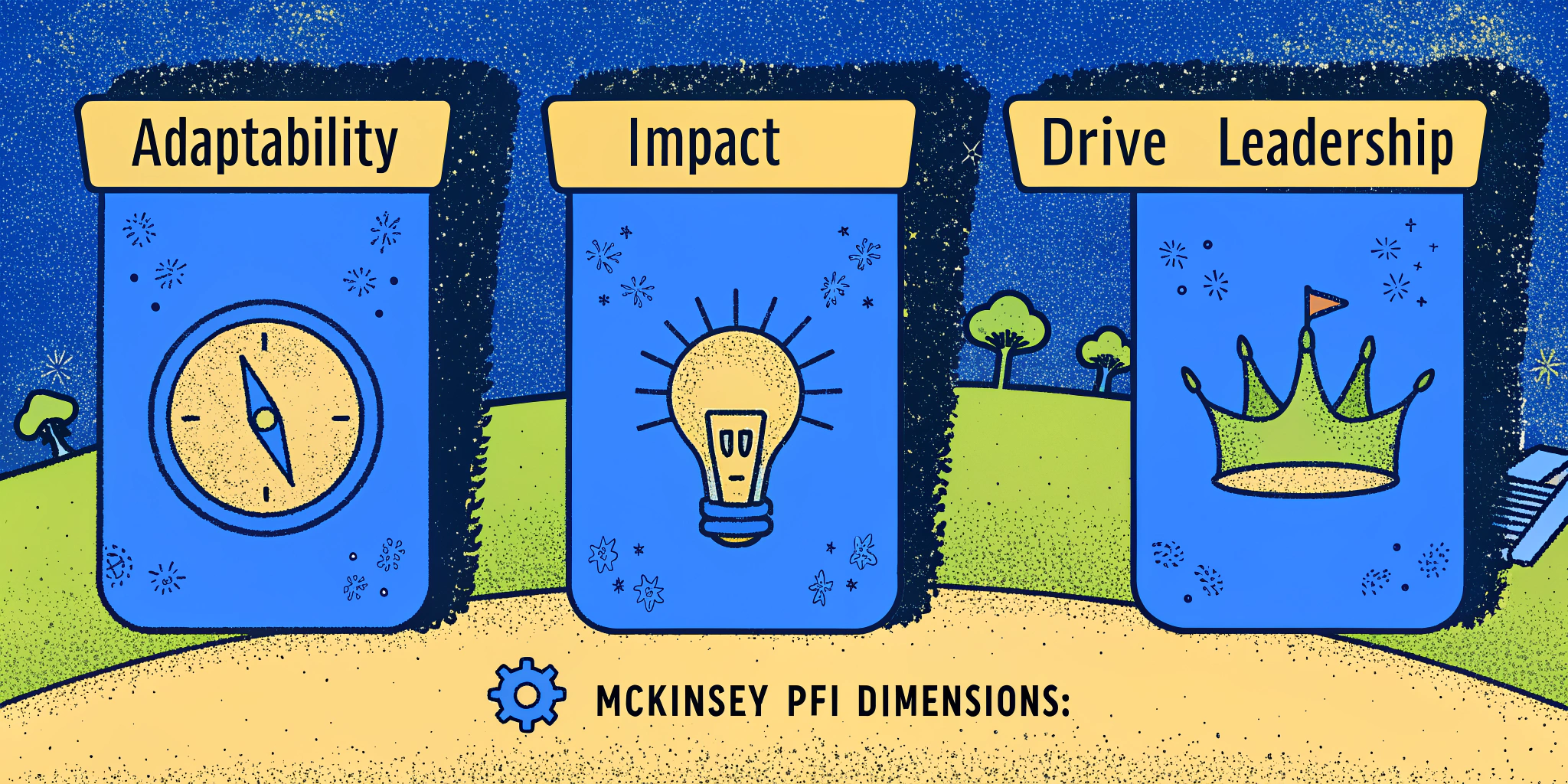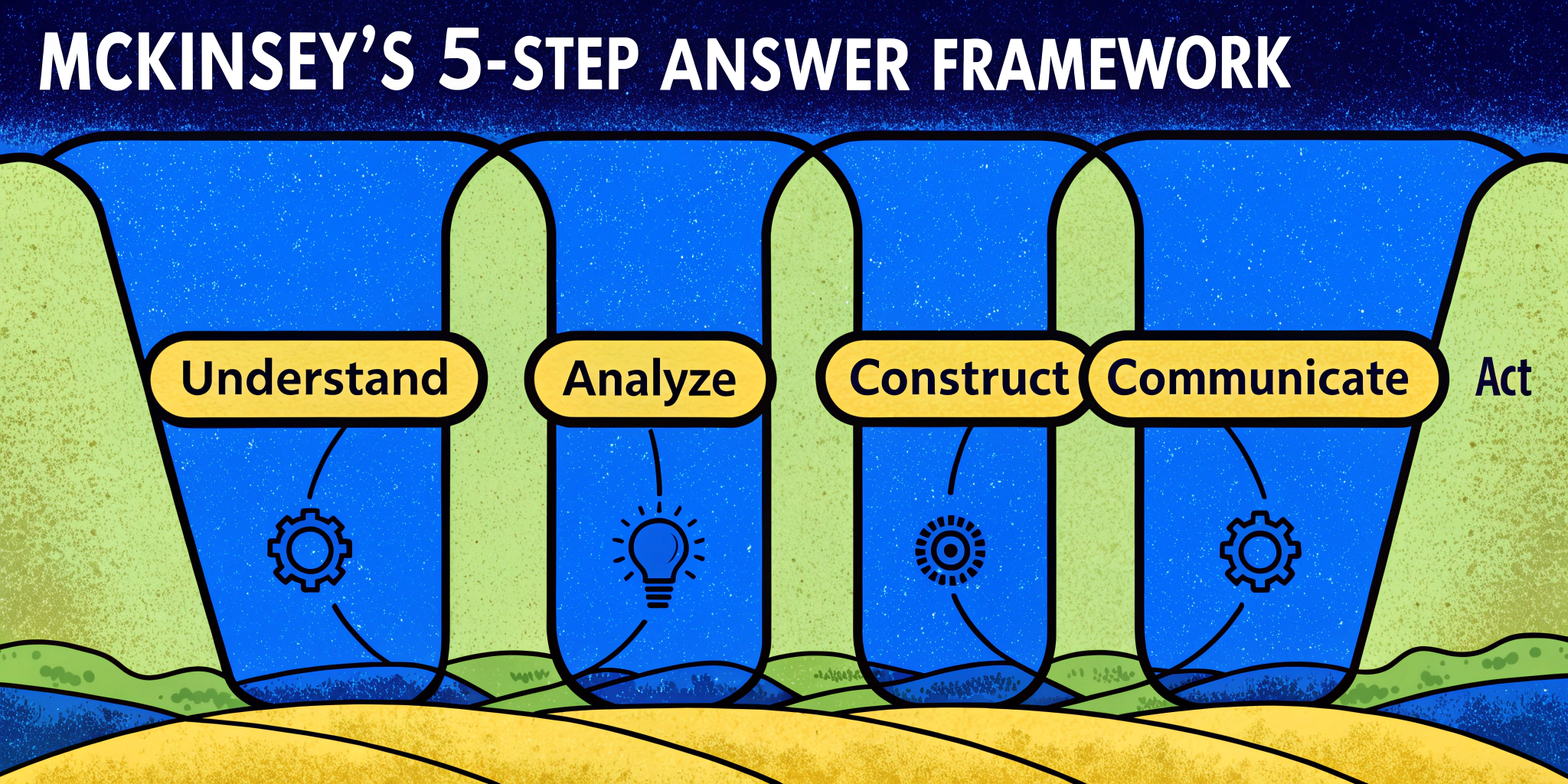Introduction: What Makes the McKinsey Interview Unique?
If you’ve ever dreamed of landing a job at McKinsey & Company, you’ve probably heard about their notoriously tough interview process. As someone who has helped countless candidates (hi, I’m Alex, a former consultant turned career coach), I can tell you that the process is challenging but absolutely beatable with the right preparation.
The McKinsey interview process stands out because of its dual focus: problem-solving through case interviews and their unique Personal Experience Interview (PEI). While most candidates fixate on cracking the case, it’s often the PEI that seals the deal.
The McKinsey interview process emphasizes both analytical and behavioral skills, with the PEI serving as a key component. Mastering this can be your golden ticket to success.
Understanding the PEI: McKinsey’s Personal Experience Interview
What is the PEI?
The Personal Experience Interview (PEI) accounts for a significant portion of McKinsey’s assessment process. Unlike other firms that skim through a variety of experiences, McKinsey drills deep into a single experience, unpacking the details over a structured, 15-minute conversation.
Here’s what to expect:
- You’ll spend about 4 minutes narrating a specific story from your past.
- The interviewer will then probe with unlimited follow-up questions to understand your thought process, actions, and impact.
McKinsey believes this approach minimizes bias and levels the playing field for candidates from diverse backgrounds.
The Four Behavioral Dimensions of PEI
McKinsey evaluates candidates on four core behavioral dimensions. Let’s break these down with examples and tips:
1. Courageous Change
- What it means: Demonstrating adaptability during significant change or ambiguity.
- Why it matters: Consultants often face shifting client priorities and need to pivot quickly.
- Sample questions:
- “Tell me about a time when you showed adaptability and flexibility.”
- “Describe a situation where you were under immense pressure.”
- Example: A trainee of mine once discussed leading a project transition after their manager left unexpectedly. They detailed how they stepped up, divided responsibilities, and kept the team on track.
2. Personal Impact
- What it means: Influencing others, especially during disagreements.
- Why it matters: Consultants must align clients with their recommendations.
- Sample questions:
- “Tell me about a time you swayed someone’s opinion.”
- “Describe a conflict with a manager or client and how you resolved it.”
- Example: A candidate shared how they convinced a client to adopt a new strategy by backing their argument with data and empathy.
3. Entrepreneurial Drive
- What it means: Taking ownership to achieve ambitious goals, even in the face of obstacles.
- Why it matters: McKinsey values self-starters who can navigate uncharted territory.
- Sample questions:
- “Tell me about a time you overcame significant challenges.”
- “Describe a situation where you pushed boundaries to achieve something unique.”
- Example: One candidate discussed organizing a charity event with limited resources, showcasing their problem-solving and leadership skills.
4. Inclusive Leadership
- What it means: Collaborating with diverse teams and creating impact.
- Why it matters: McKinsey prides itself on teamwork across global, multicultural teams.
- Sample questions:
- “Tell me about a time you led a team.”
- “Describe a situation where you collaborated with people of different backgrounds.”
- Example: A trainee highlighted leading a cross-functional team for a product launch, ensuring everyone’s input was valued.
| Behavioral Dimension | Key Skill | Sample Question |
|---|---|---|
| Courageous Change | Adaptability & Resilience | “Tell me about a time you faced ambiguity.” |
| Personal Impact | Influence & Communication | “Describe a time you swayed someone’s decision.” |
| Entrepreneurial Drive | Ownership & Problem-Solving | “Tell me about a time you overcame a big challenge.” |
| Inclusive Leadership | Teamwork & Collaboration | “Describe a situation where you worked with a diverse group.” |
How to Prepare for the PEI with Confidence
Checklist for PEI Preparation
Here’s a foolproof checklist to prepare for your McKinsey PEI:
- Review your invitation email: Sometimes, McKinsey hints at the behavioral areas you’ll be assessed on.
- Select recent examples: Ideally, use experiences from the last five years.
- Choose challenging scenarios: Pick stories that pushed you out of your comfort zone.
- Diversify your examples: Avoid repeating experiences across different dimensions.
- Prepare two examples per dimension: Always have a backup in case the first doesn’t resonate.
Structuring Your Answers: The 5-Step Framework
McKinsey loves structured communication. Use this 5-step framework to craft compelling answers:
- Context: Set the stage—what was your role, and what was the situation?
- Problem: Describe the challenge or conflict you faced.
- Action: Highlight the specific actions you took. Use “I,” not “we.”
- Outcome: Share the results of your actions. Quantify whenever possible.
- Learnings: Reflect on what you learned and how you’ve applied it since.
| Step | Key Question | Example Response |
|---|---|---|
| Context | What was the situation and your role? | “I was leading a cross-functional team for a product launch.” |
| Problem | What challenge did you face? | “We had to deliver within a tight deadline, but resources were limited.” |
| Action | What steps did you take? | “I reallocated tasks and streamlined our processes to meet deadlines.” |
| Outcome | What were the results? | “The project launched successfully, generating $1M in revenue.” |
| Learnings | What did you learn? | “I learned the importance of prioritization and cross-team communication.” |
The New Addition: McKinsey’s Values and Purpose Interview
Core Values You Need to Know
McKinsey has introduced a new Values and Purpose interview format, currently in its pilot phase. This format emphasizes the firm’s core values:
- Adhere to the highest professional standards
- Improve our client’s performance significantly
- Create an unrivaled environment for exceptional people
You’ll be asked to pick a value, reflect on how it aligns with your own, and share a relevant story.
How I Used AI to Ace My Consulting Interviews
When preparing for my McKinsey interview, I used Ninjafy AI to simulate mock interviews. Its AI Interview Copilot provided real-time feedback tailored to McKinsey’s specific interview structure. Features like InvisibleEyetrack™ ensured my focus remained natural, while the personalized model helped me refine my stories for PEI dimensions.
Conclusion: Your McKinsey Interview Success Plan
Mastering the McKinsey company interview process boils down to preparation, structured communication, and practice. Whether it’s crafting compelling stories for the PEI or aligning with McKinsey’s values, every detail matters. Use tools like Ninjafy AI to practice and perfect your approach.




